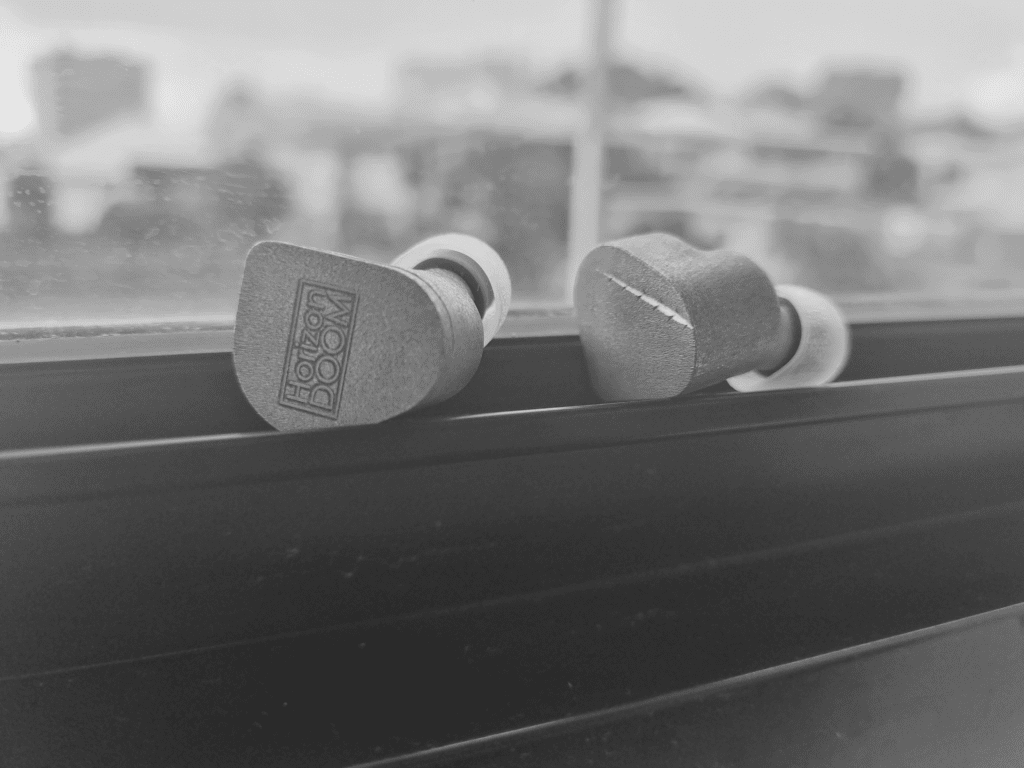Sound Impressions

Summary
The Basic’s eschew a forward W-dominant frequency response. The fulsome, thick sub-bass takes the lead ahead of the mid-bass section. There is no apparent boominess blurring the mid-range. The Basic’s sub-bass, however, doesn’t linger for too long, with a moderate level of sustain.
There is a pointed recession in the lower-mid floor, with a noteworthy rise in the upper-midrange. Accordingly, voicings are pointed in the forefront of the mix: raspier voices inhabiting the Soprano and Mezzo-Soprano ranges are vivid, resonant and elevated.
Highs bear a metallic rigidity and decay more reminiscent of the flatter timbre of a balanced armature, exhibiting excellent speed and transient performance. As the sum of its parts, the Basic’s overall presentation is grandiose, with a distinct sense of spatial separation highlighted from the upper-mid to treble emphasis. Timbrally, there are consequential aberrations by the Basic’s eccentric FR, but these are to be expected with ‘niche’ tunings.
Bass
The Basic’s bass response can be described as cavernous and large, with a romantic character. Lush undertones in acoustic music and woodwinds are soft, smooth and gentle on the ears. This is a mature tuning that languishes in the slower dynamics. Interestingly, this does not translate into harmonic distortion. Driver flutter is a persistent issue plaguing cheaper dynamic drivers. A lack of rigidity results in muddled imaging and a poor representation of what music should sound like.
The Basic’s customised dynamic driver is charming as it is technical. Counterintuitively, slower transients result in a coloured presentation that doesn’t do itself any favours amongst the ruler-flat FR crowd. This is a matter of taste because I can confidently praise the Basic’s classical expression of bass.
Midrange
The Basic’s midrange experiences a ‘two-step’ separation between the lower-mids and the upper-mids, the latter being emphasised. The Basic’s dominant bass response takes precedence over the softer and pillowier notes. The lower-mid recession isn’t as obvious as the market-revered V-shaped sound signature, but there is a lack of audible clarity in the lower-mid floor, with detectable haziness.
The upper midrange is bold and brash: a double-edged sword that is ethereal and exceptional but also shouty and metallic. The lack of lower-mid warmth strips away the cozy ambience associated with intimate settings; a counterbalance to raspy voicings and the crash of brass cymbals. The Basic has that ‘wow factor’ for specific recordings but isn’t as versatile with a myriad of recordings.
What makes the Basic’s midrange special is the speed at which the driver can respond to abrupt changes in volume. The emergence of each note, followed by a lingering decay is spontaneous and rapid. The quality of the driver selected for the Basic deserves laudation for its technical chops.
Highs
The treble on the Basic behaves like a resonating chamber. The Basic’s driver performs like a tweeter, with razor-sharp highs exhibiting masterful speed with rapid PRAT. Unsurprisingly, the choice of a silver chamber is likely to contribute to the ringiness and throatiness of female vocals, enhancing reverberation and psychoacoustic perception. Vocalists like Jonna Lee of Iamamiwhoami fame are evocative and life-like, raising goosebumps as the Basics do her sonorous voice justice.
The highs on the Basic challenges the upper limit of my tolerance for discomfort. There are moments where sharp, obtuse odd-harmonic overtones aren’t rolled off or smoothened. I suspect the excellent resolution and resolving nature of the Basic’s driver topology is both the solution and the problem. The dynamic driver behaves like a standalone tweeter but has a metallic and inflexible timbre that doesn’t do brass instruments justice, exaggerating treble glare and abrasiveness.
Soundstage and Imaging
The Basic’s headroom is expansive and deep for an IEM, presenting voicings and instrumentation across a large lateral plane relative to the ears. The panning of voicings, instruments and cues envelops the ears from different angles with pronounced distances. The intricate construction of the inner and outer cavity of the Doom is likely contributing to the stellar staging. Z-axis height is impressive, with the perception of vertical depth amongst sonic cues especially prevalent in grander recordings.
The Imaging of the Basics doesn’t quite like living up to the Basic’s grandiloquent staging capabilities. The ascertainment of instruments and voicings amidst a crowded recording is great, but not excellent. There’s some transient smearing that occurs in songs characterised by sudden crescendos and brain-melting rhythm sections. While the Basic’s microdynamic mastery does keep pace with overwhelmingly loud and fast tracks, imaging amidst the bog of sonics suffers. Respective cues start to meld into one another, lacking the nuanced separation that multi-driver setups boast. This is, of course, relative to its steep price point.
What it lacks in imaging, it makes up for in outright driver coherence and proficiency in staging.
Onto the next page for the rest of the review…



